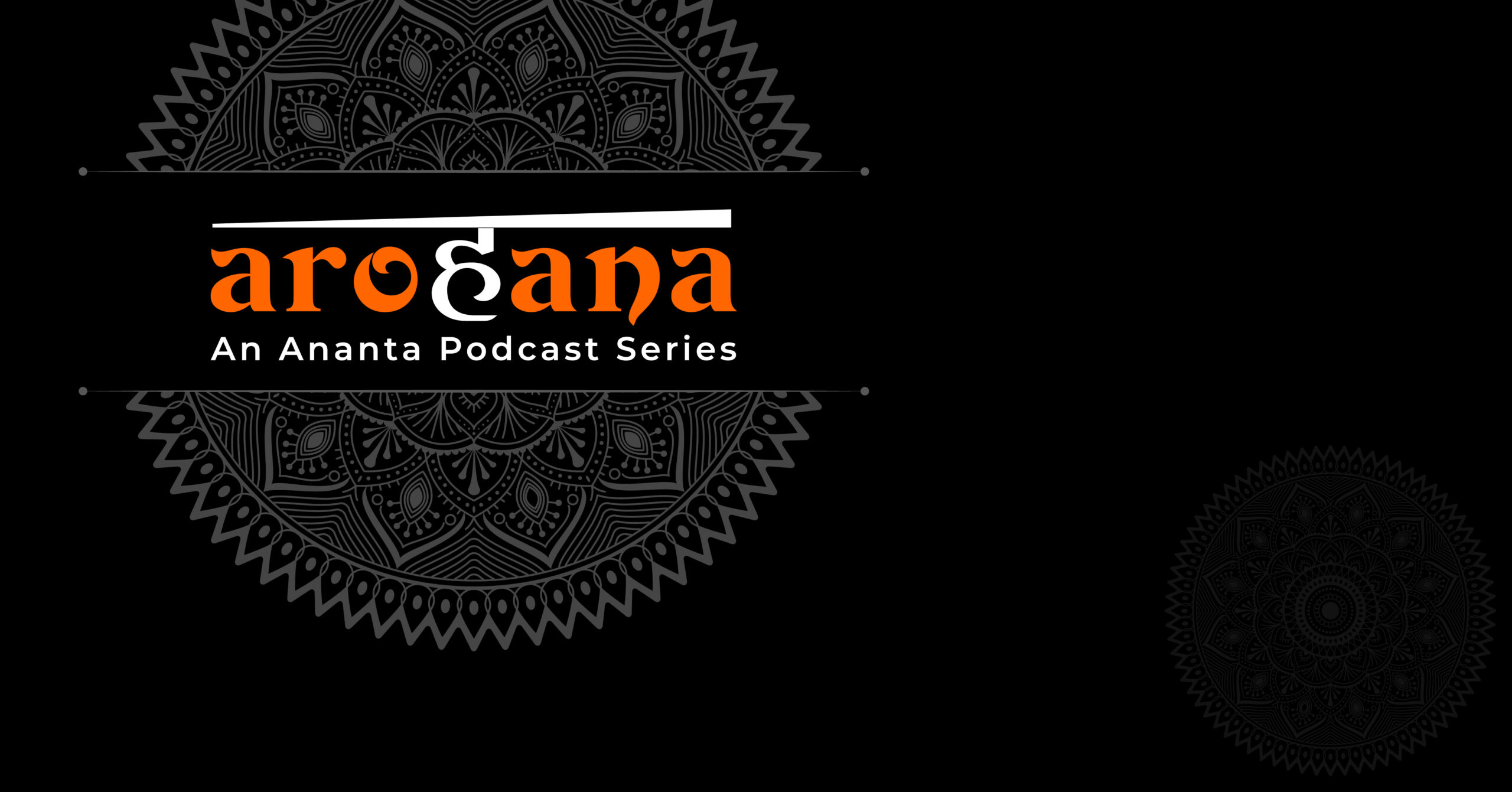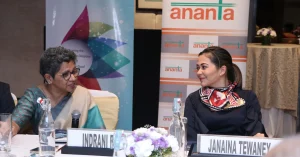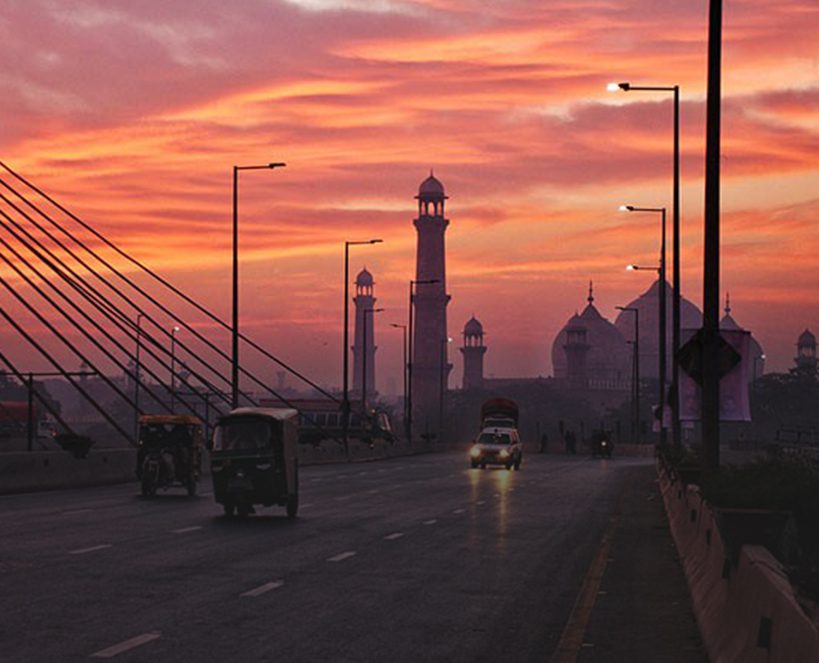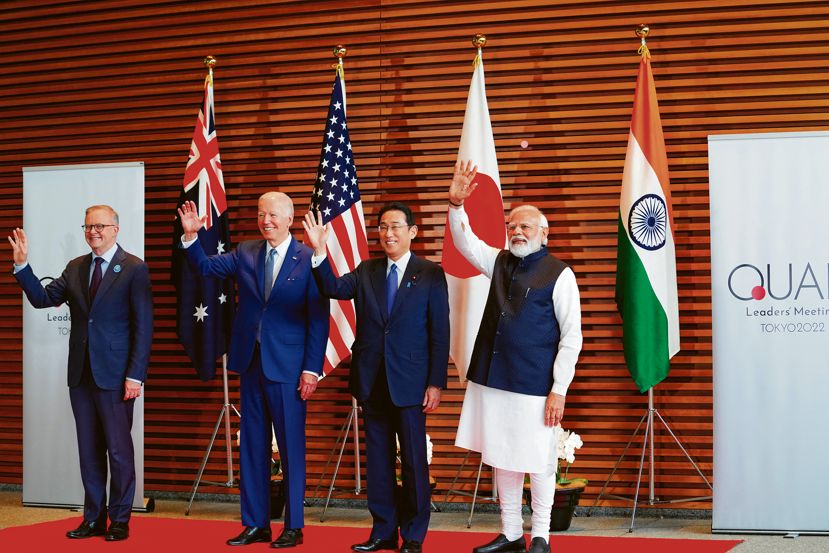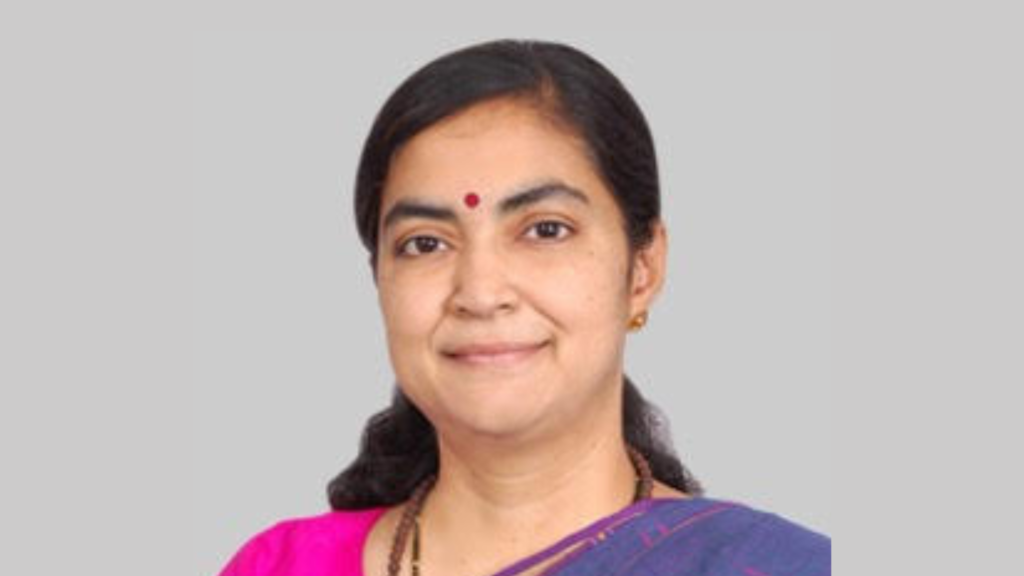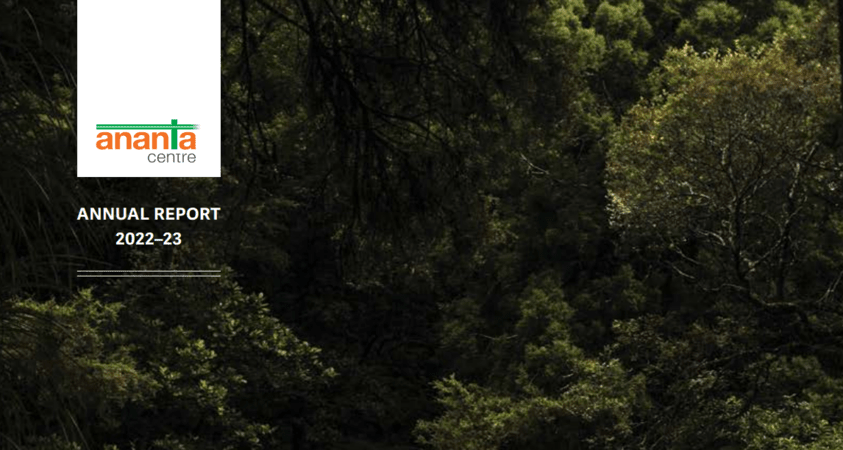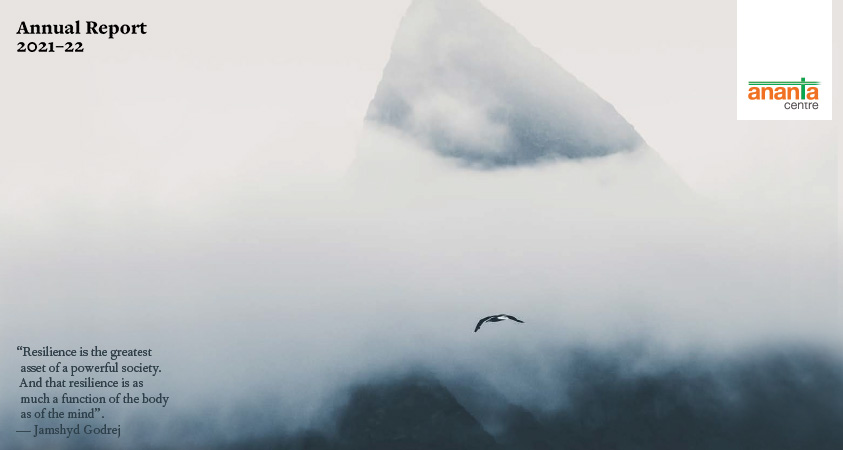H I G H L I G H T S
• Mixed picture on growth, worries on fourth quarter numbers
• RBI Report hints at maintaining existing inflation targets
• No rate cut, but bond market spikes worry RBI
• Retail inflation down, industrial output up
• Trade data offers relief as domestic demand improves
• PM batting for private enterprise, sets a new benchmark
Mixed picture on growth, worries on fourth quarter numbers
The news on the growth front was mixed as evident from the latest data released by the National Statistical Office of the Union government on February 26. The good news was that India officially came out of a technical recession in the third quarter of the current financial year, by clocking a growth rate of 0.4 per cent, after experiencing contraction of 24.4 per cent in the first quarter and of 7.3 per cent in the second quarter. While consumption did poorly in the third quarter with a contraction of 2.4 per cent, the investment rate revived with a growth rate of 2.6 per cent, rekindling hopes for the future. Construction too recovered smartly with over 6 per cent growth, holding out the promise of more employment in a sector that is the largest job creator in the country after agriculture.
The not-so-good news was that the annual growth estimate for the full year of 2020-21 was revised downwards – from an earlier figure of a contraction of 7.7 per cent to a higher contraction of 8 per cent. The increase in the contraction level is largely due to an increase in the government’s subsidies payment, which gets subtracted from indirect tax revenues while arriving at the gross domestic product (GDP) numbers. But what gave some comfort to economy watchers was the data on investment as a share in GDP for the full year of 2020-21, which rose to 26.7 per cent, up from 24.4 per cent in 2019-20.
But the bad news was that a 0.4 per cent increase in growth in the third quarter, measured in the backdrop of the full-year’s contraction of 8 per cent, implied that the fourth quarter of the current year (Jan-March 2021) would once again see a contraction of 1.1 per cent. In other words, the Indian economy, having come out of recession with a positive growth number in the third quarter, will once again go into contraction mode in the fourth quarter. It is possible that the fourth quarter contraction could be deeper than 1.1 per cent, as even this contraction is premised on a huge increase in government expenditure. Clearly, the debate over what shape of recovery the Indian economy will see in the coming months is still not over. While the annual growth rate in 2021-22 should represent a V-shape recovery (a likely double-digit growth rate next year compared to a contraction of 8 per cent in the current year), the quarterly trajectory in 2020-21 is yet to conform to the shape of any English alphabet as yet.
RBI Report hints at maintaining existing inflation targets
In a report that has major implications for the nature of the inflation targeting regime that may be put in place from April 2021, the Reserve Bank of India has batted for status quo by noting that the current mandate of an inflation band of 2 per cent to 6 per cent is appropriate and should continue for the next five years. This suggestion was contained in the RBI’s latest Report on Currency and Finance for 2020-21. Although the contents of the Report do not constitute the RBI’s official views, the suggestion on maintaining the existing inflation targets is significant. Under the rules, the Union government has to consult the RBI and decide on the inflation targets to be enforced for another period of five years from April 2021. The current targets – with an upper tolerance band of 6 per cent and a lower tolerance band of 2 per cent, were fixed in 2016. The Monetary Policy Committee has so far met on 22 occasions to decide on the monetary policy stance and the measures to be taken to achieve growth and price stability. What should be the inflation targets and what should be the flexibility band are being debated in various circles. The suggestions for maintaining status quo on this front from RBI’s Currency and Finance Report will be one more important input to that debate.
No rate cut, but bond market spikes worry RBI
Early in February, the Reserve Bank of India conducted its bi-monthly monetary policy review, in which it kept the repo rate (the interest rate at which banks can borrow from the RBI) unchanged at 4 per cent, even as the monetary policy stance remained accommodative. A significant decision was to roll back the reduction in the cash reserve ratio (CRR) for banks in two phases to the earlier level of 4 per cent by May 2021. The CRR, which represents the share of total bank deposits to be kept with the RBI at zero interest rate, had been brought down to 3 per cent to give the banks some relief in view of the Covid crisis. But with normalcy returning, the central bank has decided to return to the pre-Covid CRR of 4 per cent of total deposits.
The significance of the February 5 monetary policy review was that it was the first by the RBI’s Monetary Policy Committee after the presentation of the Union Budget for 2021-22. The big issue that the Committee had to grapple with was the huge borrowing that the Union government had planned for the next year. Gross market borrowing was estimated to be Rs 12.05 lakh crore during 2021-22. For the current financial year, an additional Rs 80,000 crore of market loans were to be raised by the government in the next few weeks, raising the gross market borrowing to Rs 12.8 lakh crore in 2020-21.
The impact of such huge borrowings was becoming evident from the bond market’s behaviour. Bond yields began to rise. The banks were given some relaxation for the bonds they were holding in terms of the requirement of mark-to-market norms and the RBI allowed retail investors direct access to the government bonds market in a bid to soften the pressure of the huge borrowing plan. But the bond market was not pleased. The bond market was expecting announcements of a schedule for open market operations by the RBI. But that was not forthcoming. Bond auctions on the day the policy was announced had devolved on the primary dealers. In subsequent days, bond yields refused to decline. This had the potential of hardening the interest rates in the economy and could increase the government’s cost of borrowing planned for the next few months. RBI’s reluctance to go in for open market operations was understandable, as it did not wish to fuel inflation, but given the huge borrowing requirements of the government, the central bank will be left with few other options.
Retail inflation down, industrial output up
Providing some relief to the Reserve Bank of India, the Consumer Price Index for January 2021 showed that retail inflation had softened to 4.06 per cent, a little lower than 4.59 per cent recorded a month earlier. This was well below the higher tolerance band of 6 per cent mandated under the central bank’s inflation targeting regime. Retail food inflation registered a sharper decline to just 1.89 per cent in January 2021, down from 3.41 per cent in December 2020.
Industrial output, on the other hand, returned to positive territory in December 2020, only the second time in the current financial year because of the Covid-19 impact. The only other month when industrial output saw an increase in the current year was in October 2020. The Index of Industrial Production (IIP) for December 2020 rose by 1 per cent. Manufacturing contributed to this revival with a 1.6 per cent growth rate, aided by a sharp rise in electricity output by over 5 per cent. The core sector, which includes eight infrastructure industries accounting for a weight of over 40 per cent in IIP, had recorded 0.2 per cent growth in December 2020, but the pace slowed a bit in January 2021, when the growth was reported to be 0.1 per cent.
Trade data offers relief as domestic demand improves
Contributing to the overall story of a revival in the economy, exports of merchandise goods recorded 6.6 per cent growth in January 2021. In December 2020 too, merchandise exports had notched up a similar growth rate. With this, exports grew in three of the 10 months in the current financial year, for which data is available. Importantly, exports growth in January was driven by buoyancy in non-oil and non-jewellery segments, indicating a revival in the manufacturing sector. Imports also saw an increase for the second consecutive month, at around 2 per cent, indicating that demand in the domestic economy was on the rise. Trade deficit, as a consequence, widened, but this is no concern for the country, which is now sitting on foreign exchange reserves of over $580 billion, adequate to meet more than one year’s pre-pandemic level of imports by India.
PM batting for private enterprise, sets a new benchmark
It is not very common in India for its prime minister to speak out his or her mind on economic policy matters. This is particularly so when such airing of views is aimed at committing the government to reduce its own role in economic activities and allowing the private sector to grow and expand its footprint. This is a direct outcome of how India’s private capital has been stigmatized for a variety of reasons. So, when early in his first tenure as prime minister, Narendra Modi decided to amend the restrictive provisions in the land acquisition laws for industrial use, the Congress attacked him as one who was leading a “suit boot ki sarkar” (a government owned by and catering to big money). That attack was launched by Rahul Gandhi in April 2015. This had hobbled the Modi government to an extent that it became extremely wary of taking business friendly steps for fear of a political backlash. Land law changes were placed on the back burner.
Things however changed when Modi began his second tenure as prime minister in 2019. In September 2019, his finance minister announced steep cuts in tax rates on companies. During the height of the pandemic months, Narendra Modi ushered in reforms of labour and farming laws to make them more friendly towards big business and remained committed to them in spite of the continuing agitation against them by farmers. The latest Budget announced a privatisation policy that was ambitious and bold. It announced the government’s resolve to privatise two public sector banks and a state-owned general insurance company. In addition, all public sector undertakings (PSU) in the non-strategic sector would be privatised or shut down. The strategic sector was defined as PSUs operating in the following areas: atomic energy, space, defence, transport, telecommunications, power, petroleum, coal, miners, banking, insurance and financial services. In the strategic sector, the new public sector policy mandated that there would be only “bare minimum presence of the public sector enterprises”. The remaining PSUs in the strategic sector would also be privatised or merged or made into subsidiaries of other PSUs or simply closed.
What happened on February 10 was truly unprecedented. Even as there were internal discussions and some debate within and outside the government whether the Budget announcements on privatisation reflected the actual intentions of the government, Prime Minister Modi set at rest all such doubts by an address in Parliament. Going far beyond the Budget’s privatisation push, Modi came out strongly in support of the private sector, announcing that a time had come when defaming private companies would no longer fetch votes. This was not an ordinary address, as it was delivered on the floor of Parliament while he was replying to the President’s address. While making a pitch for a bigger role for the private sector in the economy, he reiterated that wealth creators were important for the country and its youth. “Demoralising private companies and disregarding their contribution won’t do any good to the country or its youth. Our experience has shown that private enterprises in mobile manufacturing have led to every poor family owning a mobile phone now. Also, the country’s private sector in the pharmaceuticals space has been serving humanity through vaccines and medicines during Covid times,” the prime minister said, boosting the private sector’s confidence in a government that was recognising its role in nation building.
In the same address, the prime minister questioned the earlier practice that the civil servants should be running companies. He underlined the need for a rethink on the kind of power structure where bureaucrats handled every busines in the country. Should members of the Indian Administrative Service or IAS alone be tasked with everything, he asked.
That the prime minister was keen on a change in his government’s outlook on the role of the private sector became evident when again at a public function on February 25, Modi announced that the government had no business to be in business. “Our mantra is monetise and modernize,” he said while announcing that the government had plans to monetise as many as 100 public sector assets to mobilise as much as Rs 2.5 lakh crore. These are ambitious goals. But the prime minister’s backing of his finance minister’s Budget targets augurs well for the government.
………………………………………………………………………………………………
(The views expressed are personal)
………………………………………………………………………………………………




